Wilson Audio Specialties WATT/Puppy 50th Anniversary Edition *
A Sasha V in a smaller, less costly package? or something else entirely?
“These are what I listen to when I want to know what I’ve recorded, Roy Halee told me, standing in front of a pair of the original Wilson WATTs (Wilson Audio Tiny Tots). That’s what I listen to for pleasure,” he added, pointing to the Infinity IRS monoliths dominating his large, vaulted-ceilinged Connecticut listening room. Mark Levinson electronics juiced the WATTs. Big Jadis tube amps powered the panels.
It was early 1987 and Halee was still relishing his Graceland triumph. That April Graceland won the “Album of the Year” Grammy. The previous year, the late Dave Wilson had created the stand-alone WATT speaker to monitor his own legendary recordings, now again available on vinyl, SACD and Ultratape R2R through Acoustic Sounds.
The Puppy woofer was introduced in 1989 according to Wilson’s website and for the next forty or so years, the company designed and manufactured a series of WATT/Puppy iterations, the last of which, before this 50th Anniversary edition, was the WATT/Puppy 8. It went out of production in 2011.
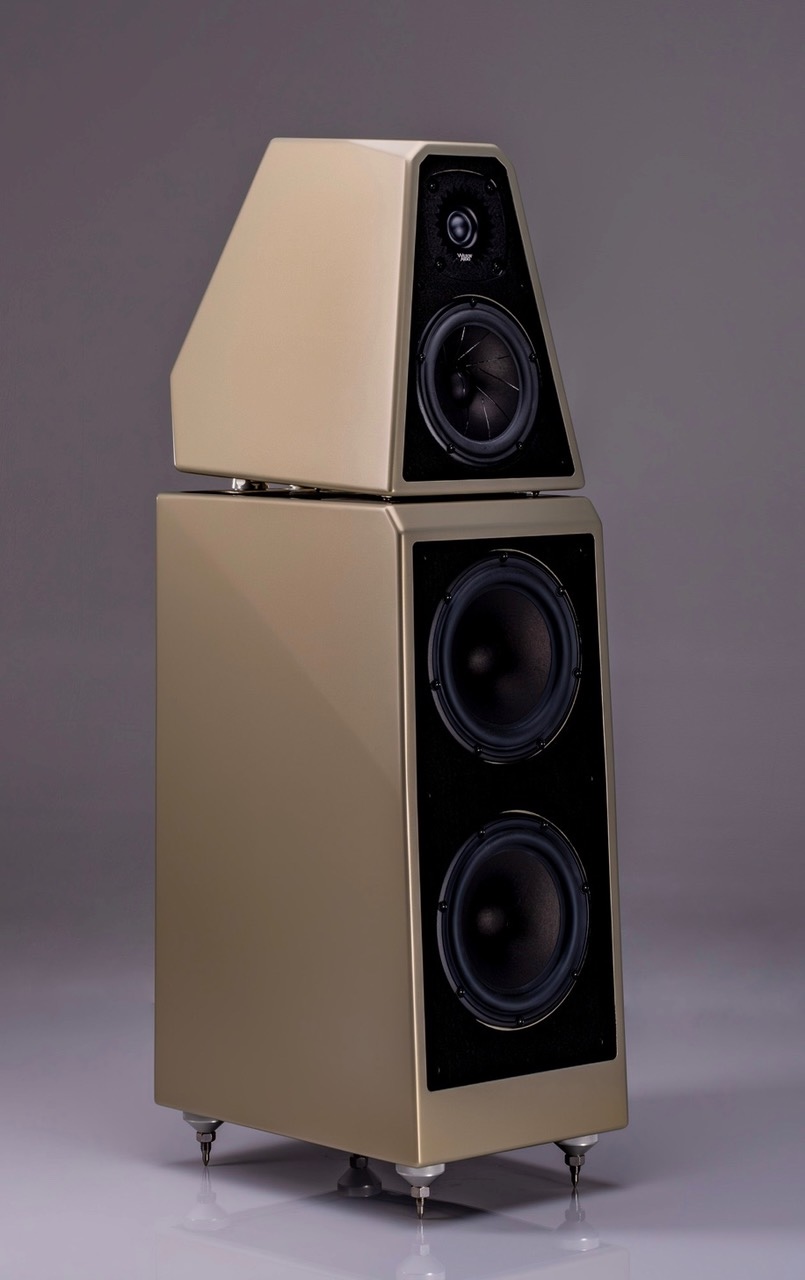 The new WATT/Puppy
The new WATT/Puppy
Wilson devotees might think of this new speaker as a late blooming WATT/Puppy 9, though unlike the previous 8 iterations, the 50th Anniversary Edition is a fundamentally new loudspeaker, not an incremental update of what preceded it. It does, however, strongly resemble the older design.
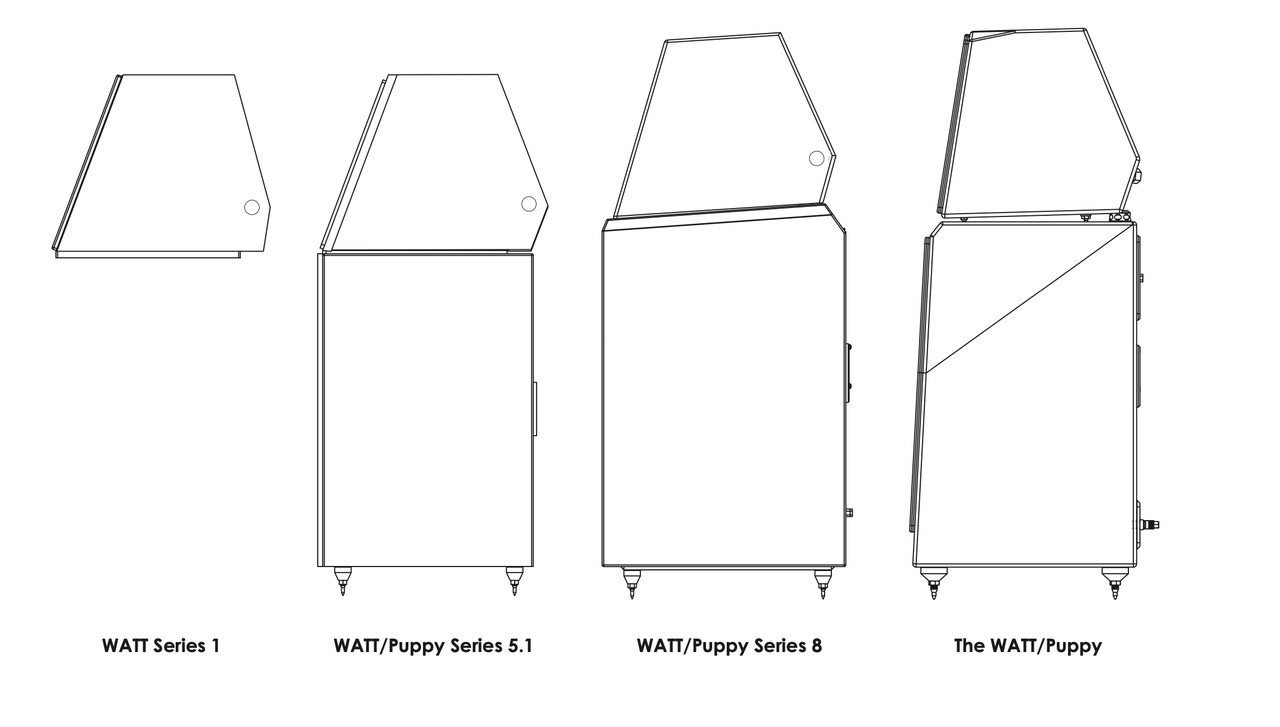
The look remains indelibly iconic, so it almost seems unnecessary to write that it consists of a two-way “head unit” (the WATT), the oft copied truncated pyramid shape of which originated with a drawing Mr. Wilson sketched out on beach sand, secured atop a double woofer floor standing enclosure, though with the crossover later moved into the woofer section, the WATT could not and still cannot operate as an independent loudspeaker.
The limited 50th Anniversary edition arrived last fall for this review, but for 2025 it's been replaced with The WATT/Puppy, which is the identical loudspeaker minus a commemorative 50th anniversary medallion.
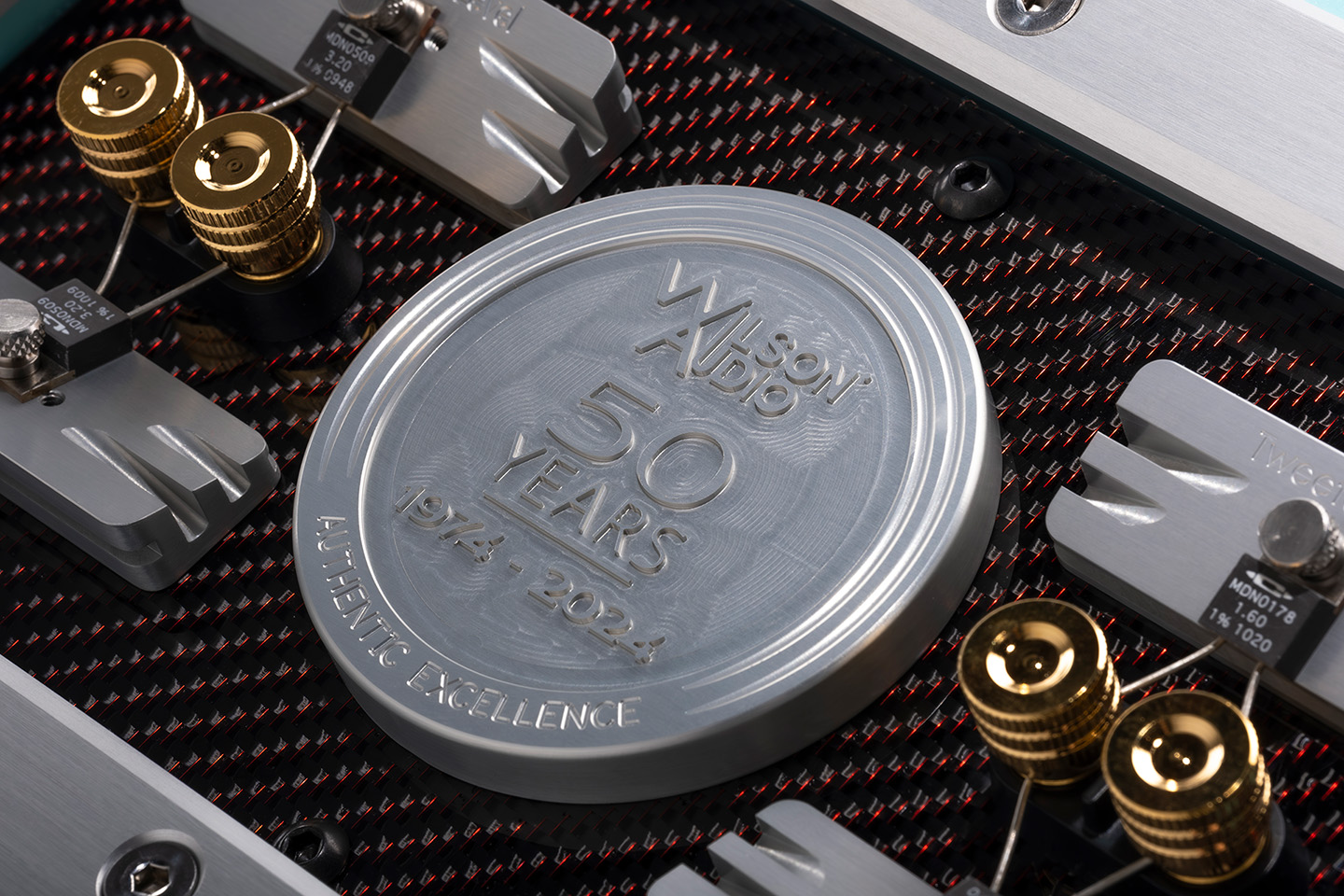
The $39,500 WATT/Puppy resides in Wilson’s formidable, sonically consistent lineup between the least costly floor stander Sabrina X ($21,500) and the Sasha V ($52,000). Comparing Sasha V and The WATT/Puppy brought forth, at least in my mind, the old Contadina tomato paste jingle “Who put 8 great tomatoes in that itty bitty can?” because what Wilson has done here is pack the same drivers found in the larger, heavier and more costly Sasha Vs into The WATT/Puppy's more compact. considerably lighter, but no less spectacularly solid, well-constructed enclosure. Why do that? Read on!
Sasha V stands 45 1/16th inches tall, 14 ½ inches wide and 23 15/16th inches deep and weighs 245 pounds. The WATT/ Puppy stands 41 11/32 inches tall, 12 inches wide and 18 11/16th inches deep and weighs 160 pounds. The weight difference is obvious in the numbers. The dimensional differences between the speakers is best appreciated visually. The WATT/Puppy appears considerably more compact than the numbers seem to indicate.
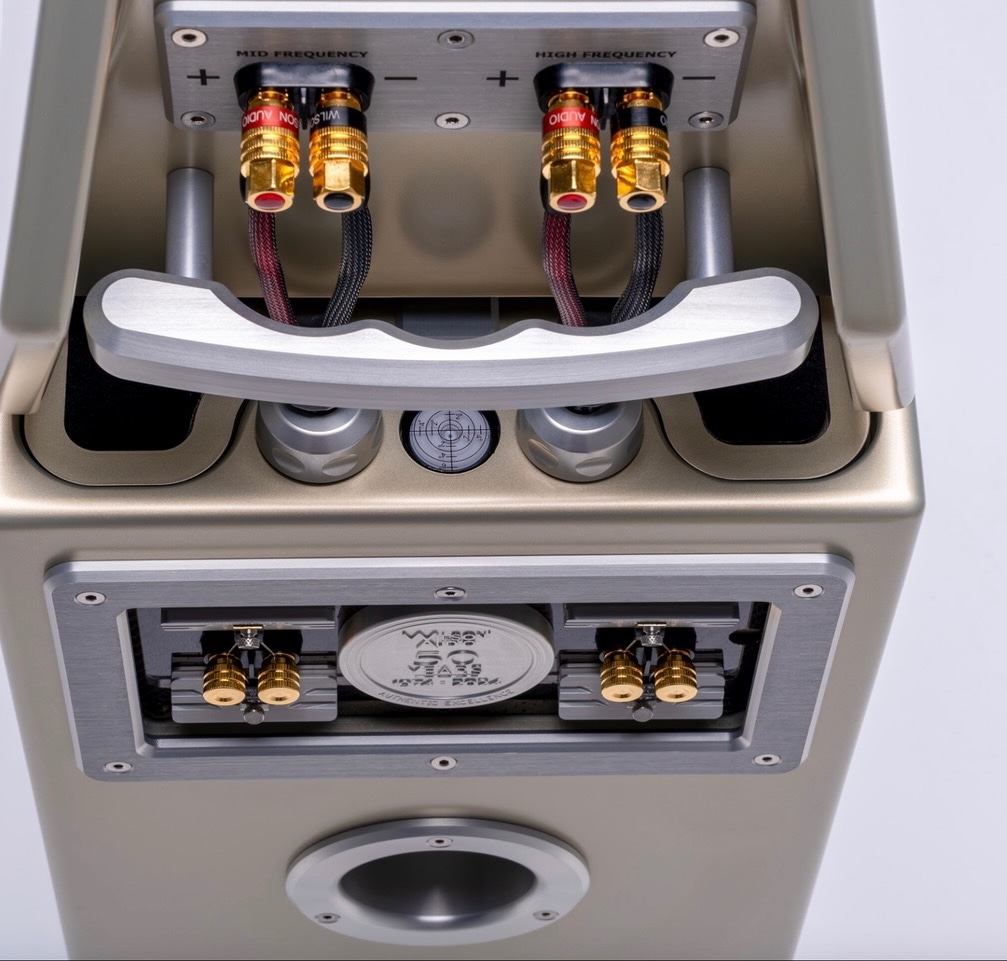 The vandals didn't take the handle, also on the original
The vandals didn't take the handle, also on the original
Both speakers feature the same ScanSpeak developed 8 inch cellulose composite, long excursion woofer pair, 7 inch AINiCo (Alnico, Nickel, Cobalt) QuadraMag paper/pulp midrange originally developed for the Chronosonic XVX (and also used in the Alexx V and Alexia V), and a custom designed 1 inch textile "silk" dome Convergent Synergy Carbon Tweeter featuring a specially designed carbon fiber rear-wave chamber originally developed for the Alexx V and used as well in the Alexia V that suppresses out of phase back wave energy.
As the name suggests the midrange driver utilizes four large Alnico magnets that help produce an exceptionally wide bandwidth—almost full range— low distortion driver. The woofers vent through a 3 inch diameter, 6 inch deep circular port located on the enclosure’s rear just below two pairs of driver-protecting Vishay mil-spec resistors mounted to heat sinks. The drivers are protected and there’s no sound quality loss.
A narrow slot near the top rear of the mid/tweeter enclosure is an acoustical vent that releases pressure and produces a Q that puts the box tuning somewhere between a closed system and a ported one, Daryl Wilson explained. It vents lower frequencies, while having little to no effect on the higher ones.
Sasha V and WATT/Puppy Anniversary Edition both make use of three strategically used composite cabinet construction materials Wilson labels X (external enclosure, internal cabinet bracing), S (midrange coupling to front WATT baffle) and V (Puppy top/damping interface). These materials vary in density, stiffness and self-damping capabilities. Hardened steel spikes that interface with a heavy metal plate bolted to the V material woofer enclosure top, help to isolate and decouple the sensitive to vibrational energy mid/tweeter head unit.
These materials and how they are used are intended to produce as low a noise enclosure as can possibly be constructed as well as effectively isolate the two from each other. Wilson claims the V material, developed for the XVX, made it possible to fit these powerful drivers into the smaller enclosures without paying an added noise penalty. A spike and “staircase” arrangement—a simplified version of what's used in the larger, more costly speakers in the line— allows for angling the midrange/tweeter enclosure toward the listening position, to compensate for listening distance and floor to ear height. Proper alignment results in improved sound staging, image focus and even timbral smoothness by helping to precisely reintegrate, at the listening position, the frequencies that have been separated by the crossover and sent to the various drivers.
Wilson in 2018 purchased and moved in-house the Reliable Capacitor Company (a/k/a “REL Caps”) and winds in-house proprietary AudioCapX-WA caps as well as a new copper version first used in the Sasha V that's been further refined "....with copper end-spray and gold leads, ensuring that high-frequency micro-details are rendered with exquisite resolution." These high quality caps and other HQ crossover components are used in both speakers’ networks, that are similar but not identical to one another.
The crossover network is potted (sealed) to avoid vibrations that can produce capacitor microphonics. I witnessed the attention to detail that goes into Wilson speakers that’s more easily seen on the outside. What’s inside is also taken to near fanatical limits as I observed during a factory visit—see the embedded video below that I shot during a factory tour produced for The Absolute Sound. The time and effort put into creating the wiring looms is as impressive as is the way the enclosures are created.
Wilson’s website suggests this newest speaker might be the original WATT/Puppy Dave Wilson would have designed had he then the materials resources now available to the company. Sadly, Dave didn’t live long enough to enjoy the final version of the half-decade long in development, mesmerizing-sounding, texturally supple 7 inch midrange driver first introduced in the Chronosonic XVX and later used throughout much of the Wilson speaker line. To hear well recorded female vocals through this midrange is to go rubber leggy.
Two pairs of cables exiting from the top of the woofer enclosure provide signal to the midrange and tweeter. A single pair of Wilson designed gold-plated binding posts can accept banana plugs, spades, or bare wire.
Five standard automotive paint finishes are available as are seventeen extra-cost special finishes as well as an additional eleven "Premium Pearl" finishes. No doubt Wilson can match the color of your Ferrari, Maserati or SAAB.
89dB rated efficiency means a wide range of amplifiers should be able to drive the speakers, though the 2.87 ohms at 86Hz minimum impedance suggests a high current solid state amp might work best. Nonetheless I was tempted to try the hybrid tube output Music Reference RM-200MKII that outputs around 100 watts using 4 6550 tubes, especially since the specs say minimum 25 watts. What did I have to lose? But I started with the darTZeel NHB-468 mono blocks.
Set-Up
Dealer set-up is part of the deal when you buy a pair of Wilson speakers. Manufacturer set-up is usually standard for review pairs and for this review Wilson's Bill Peugh (who normally trains dealer-installers) joined by Tyler Hall, (who normally does marketing management) arrived one day to unbox and do the install. I've reviewed and owned probably a half dozen Wilson speakers over the 26 years I've lived here and since most loudspeakers from every manufacturer end up situated within a very small patch of real estate near the room's corners, it didn't take too long for The WATT Puppys (I decided the plural of "Puppy" here is "Puppys" not Puppies) to get initially set up, though if you read the manual you'll see that the set up is as precise and meticulous as is the way the speakers are manufactured. What followed were minute toe in and rake angle adjustments prior to spiking (using Wilson's Spike and diode footers) that produced small, yet significant improvements in bass response, overall instrumental timbres and image specificity. Tiny gestures can often produce grand sonic changes. One tiny gesture I always make is to leave off the grill covers.
What I Heard
The sonic consistency among the current Wilson speaker lineup is remarkable. Daryl Wilson has both improved the sound up and down the line, as well as managing to give buyers at every price point a very similar sonic experience, limited by varying degrees throughout the line by bass extension, SPL production, macro dynamics and spatiality. Room size and listening preferences matter in making choices within the line.
Of course if you do not like the sound of the XVX, you're not likely to like how the WATT/Puppy sounds, or the Alexx V or any of the company's speakers. I own the XVX (thank you Q). I am 100% satisfied with every aspect of the music they produce in my room. It's a big speaker shoved close to the front wall corners. I sit nearfield, yet they effortlessly and totally disappear.
Referring again to the XVX's: the sound field is enormous when the recording can produce it. You can be in the club, or stadium or whatever the venue occasionally with added "surround sound" elements throwing images well to the sides and sometimes behind. The room walls ceiling and floor disappear. When everything is right the imaging height is 100% appropriate even though when I look directly in front of me, my eyes see the space between the top of the large woofer enclosure and the bottom of the lower midrange driver (one of two QuadraMags), with a stack of drivers never heard as separate sound sources piled high above.
Imaging is as precise and "realistic" (as opposed to hyper-real) as you'd ever want or expect. Inexperienced listeners point to the double stack Still Points Aperture II acoustic panels sitting centered on a ledge between the XVXs and ask "Is that the center channel"? Of course we have all experienced the "phantom center channel", but the XVX produces less phantom and more solid channel than any speaker I've had here. Sometimes instruments seem to be playing "live" behind the speakers as if a guy is going to walk out from behind and show his face. That these illusion persists for more than four years after the installation—sometimes inducing an adrenaline jolt, should tell you something about the speaker's spatial abilities. I hear you: "I'm here to read about the WATT/Puppys that I can afford, not those monsters I can't".
The XVXes go down to below 20Hz in the modest sized room. The speakers are matched within .5dB of each other. Room placement does slightly exaggerate the mid bass but there's a room induced dip on the other side that tends to null the boost. Or as my former editor put it, "The low frequencies were powerful and extended, though without any "boom." The clarity and smoothness of the treble were impressive, with a tremendous ease to the sound. The presentation of the soundstage on my own recordings was the best I have experienced."
So why am I heaping upon you the XVX listening notes? Because The WATT/Puppy delivers pretty much the same experience, just less of it all around and more of it than I was thinking I'd get.
Who wants to take out of the system XVX's to put in any smallish speaker? But that was the job and I figured I'd deal with it, get the review completed and get the XVX's re-installed as soon as possible. But that's not what happened.
Instead, after a short spell, I found myself saying to whoever was close by, (which of course was only me), "If for some reason I needed the money, I could sell the XVX's and be perfectly content with The WATT/Puppys. I was fully enjoying the experience without reservation. Not at all what I was expecting!
Why? The overall timbral balance between the WATT/Puppys and XVX was essentially identical —especially in the midrange—which was not surprising because the two speakers share the same enticing midrange driver—which is no guarantee that they will perform the same in such different circumstances.
There are a pair of QuadraMags in the XVX, that cross over to an upper midrange and then to a tweeter. That makes the job far easier in terms of frequency range coverage for the XVX's QuadraMags. Wilson's engineers managed to give the same driver in the WATT/Puppy— one not a pair— a far wider range to cover without any negative sonic consequences that I could identify. And clearly in the absence of an upper midrange driver, the WATT/Puppy's tweeter has to extend considerably lower, both to cover the range the XVX's upper mid speaker handles (lets' leave aside the XVX design difficulties integrating 4 drivers above the low bass), which the XVX does so well (thanks in part to their individual physical adjustability that doubters doubt can be do anything good or useful).
The WATT/Puppys don't play as loud, do not produce the same macro dynamic slam, don't extend as far down, don't produce as grand a soundstage. Take any performance aspect and the WATT/Puppys deliver less than do the almost 10X the cost XVX but the omissions are perfectly balanced and in the big picture surprisingly minor when both speakers play in a relatively small room.
The result is a speaker that, especially for those habituated to the current Wilson sound, sounds "right", and more importantly is fun to listen to, and has an addictive, "welcoming" quality. That's something I couldn't say was true when I owned the 8s or the Alexandria X2, for that matter, because good as they were, the "exotic" inverted dome metal tweeter always had a "sound" and the "exotic" Focal sourced woofers fabricated from a material Focal called "W", didn't produce the bass extension or dynamics the ones Wilson now uses. This is not to slam Focal, but simply to say in the context of Wilson designs, they were not efficacious.
Back to the WATT/Puppys: they play more than loud enough in my room, go down deep enough (to 26Hz) for most every kind of music, produce a satisfyingly wide, deep and reasonably tall soundstage (etc.) but most importantly, they were at all times fun to listen to, and had no glaring weaknesses. The only one I could come up with was that the bottom octaves were slightly overly generous but that might've been my room talking.
Once all was settled and I'd spent weeks with the sold state electronics, in I installed the ampsandsound all-tube preamp and that produced another level of harmonic finesse, and then replaced the darTZeel solid state amps with the hybrid Music Reference MKII, which had no trouble driving the WATT/Puppys so I can only conclude that you have a wide choice of amps, tubed and solid state.
All of the musical comments in that preamp review were based on listening through the WATT/Puppys, yet other than one mention of the soundstage not being as massive as through the XVXes on Donovan in Concert (EPIC BN26386) recorded at the Anaheim Convention Center (deserves a good reissue), I'd become oblivious to the speaker change.
About the Analogue Productions Pablo reissue of Take Love Easy (APJ-159), I wrote about the "finely drawn guitar and voice images centered and possibly a mono mix but good front to back imaging with Ella upfront and Joe behind.... the duo sounds alive in the room."
I've heard these speakers in a variety of settings including at a Gryphon store event at Stereo Exchange in New York, back in April and in every space, they put on an impressive, especially sonically seamless presentation. Timbrally nothing "stuck out". Coloration was minimal to non-existent. If you'd asked anyone in the room where the speakers sat in the bright/dark or "warm/cool" sonic continuum, I'm not sure anyone could have answered the question. What I heard there was similar to what I was hearing at home.Unlike with the more complex Wilson speakers that can sometimes sound not so good in a large room with seats well off-axis, every seat in the Stereo Exchange room was a dramatically good seat (I moved around during the presentation).
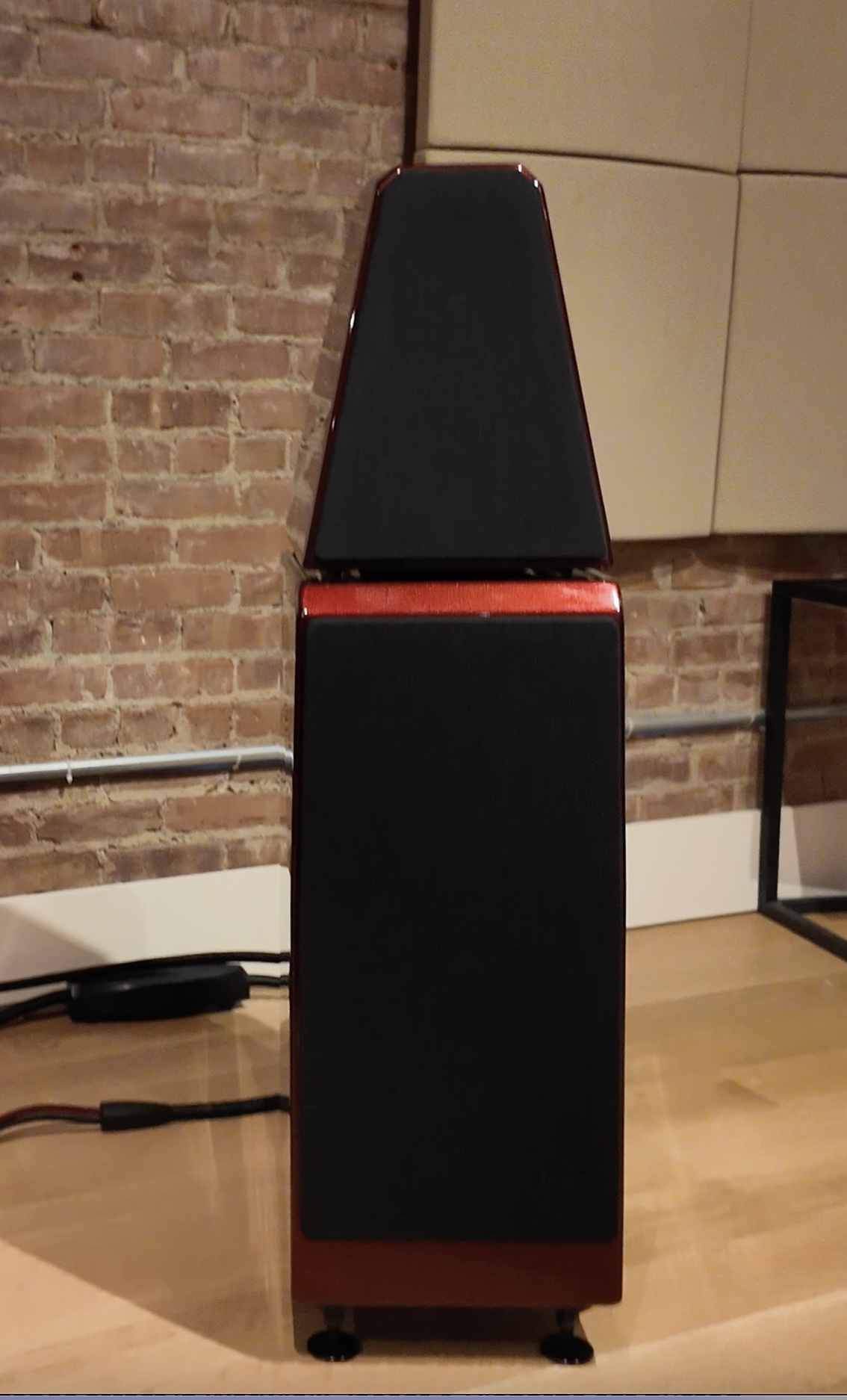 Wilson WATT/Puppy at Stereo Exchange, NYC April, 8, 2025
Wilson WATT/Puppy at Stereo Exchange, NYC April, 8, 2025
A Resolution and Detail Shortfall?
Are there speakers that resolve a bit more information and are perhaps somewhat "faster"? Yes. The horn contingent would find these speakers—and any speaker with a small domed cone (cloth, metal or whatever)—sluggish, perhaps somewhat cloudy and not fully capable of delivering pristine, "snappy" high frequency transients. Dynamic driver fans usually find horns "shouty" with upper mid and high frequencies that are too prominent and that call attention to themselves even as they deliver the speed and detail.
Advocates of Wilson's "silk dome" tweeter will say (I will say) it's a real world compromise that provides more than adequate resolve, high frequency extension and transient speed to make music come alive on the best sounding recordings, while managing to provide a bit of cover for the large population of mediocre recordings. What good is a speaker that sounds pleasing and exciting on only the best recordings?
Wilson used such drivers for years and listening around and not to them was always the best way to enjoy the overall sound (which is not to say exotic driver tech hasn't greatly improved since). The latest tweeter effectively delivers every musical genre's high frequencies and more importantly integrates with the midrange to produce believable instrumental timbres.
Ry Cooder's Paris, Texas soundtrack or his retro album Jazz, or any of John Renbourn's Transatlantic records played through the WATT/Puppy produced guitar and percussion sound that was natural and believable and not hyper-edgy and tipped up for added excitement.
The final record played before the Wilson team returned to re-install the XVXes was Volume II of the Mark Levinson Acoustic Recording Series (MLAS-2). I was surprised to find a copy (the only one) on Discogs for sale in the U.K. for £12.00! This is a superbly recorded, mastered (by Bob Ludwig) and pressed solo piano recording by Lois Shapiro a lesser known pianist (to me at least). Definitely demo disc quality in the subtlest of ways. She performs Ravel's "Valses nobles et sentimentales" and Haydn's "Sonata No. 49 in Flat major".
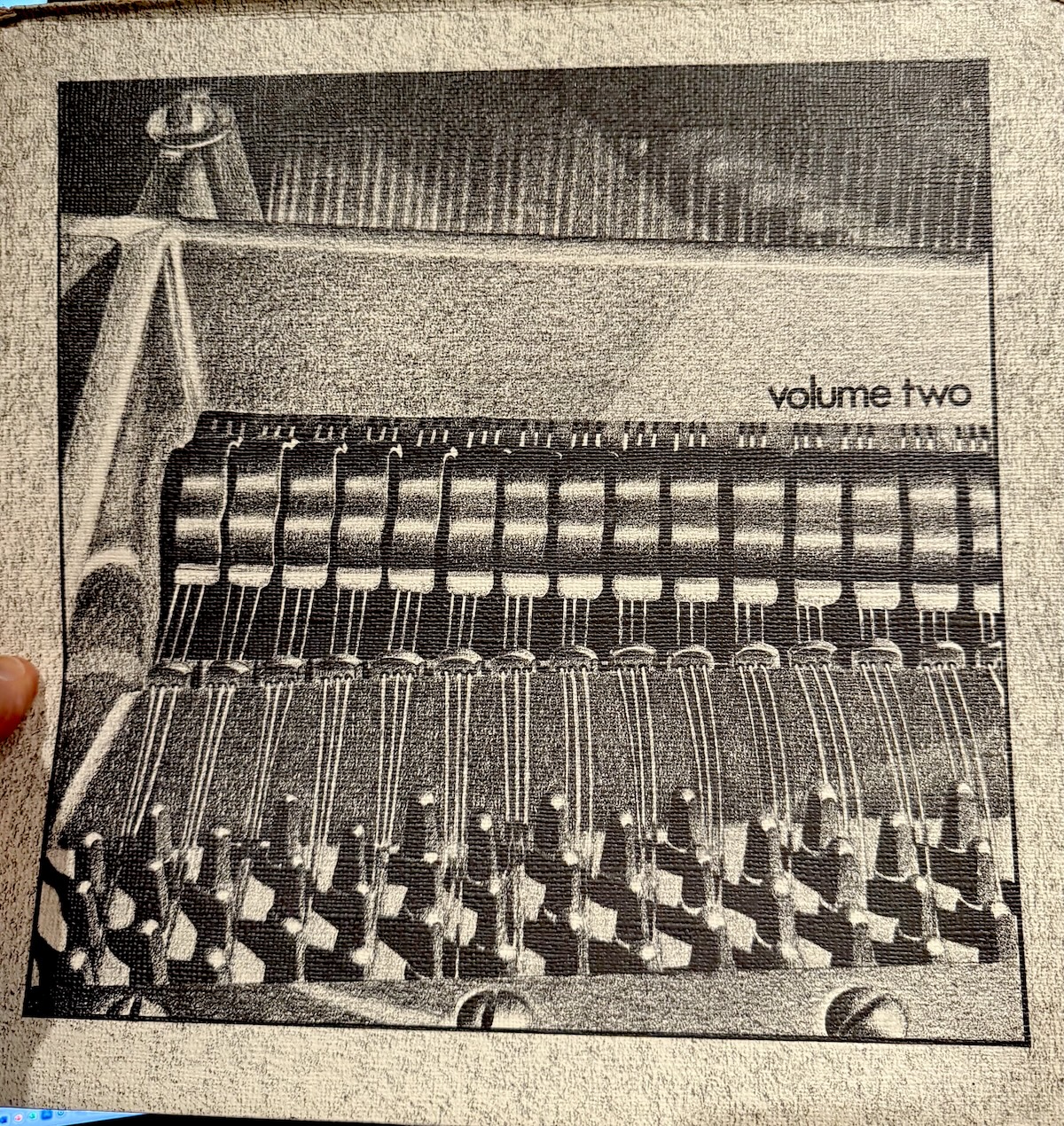
The notes advise playing it back at a level that corresponds to the spatial reality of the music in order to hear the "air" and "space" around the music and hear the concert hall in which it was recorded. I doubt anyone reading this would be anything less than fully impressed by how The Watt/Puppys reproduced this recording's spatial, timbral and micro- dynamic qualities. You're in the concert hall.
Yes, you're even more in the hall with the XVXes, but you're also out an additional almost $300,000 and for that much you can attend a hell of a lot of live concerts (though you'll be waiting in your seat a long time for Horowitz, Cliburn, Rubinstein, Pollini [et.al] to arrive on stage!). I don't mean to discourage anyone who can afford the XVXes from buying the WATT/Puppys instead!
Conclusion
How the WATT/Puppy compares to the Sasha V is a question I cannot answer. I'd say which would be best or make the most sense depends upon room size as much, as if not more than anything. The larger speaker probably plays louder, delivers greater macro dynamic punch and produces a larger scale soundstage, but I can't say for sure.
What's for sure is that the WATT/Puppy does all of those things well. It is a most agreeable, fun speaker to listen to, in part because on the one hand it commits no sonic errors that I can hear, and on the other it gets just about everything else so right.
They were an inviting presence in my listening room and though I knew what I was missing with the XVXes out, I concluded if need be living instead with the WATT/Puppys would keep me as musically engaged as I had been with the big speakers. "Would you come upstairs already?" was an oft read text message complaint coming from upstairs.
The WATT/Puppys paired well with solid state and tube amps and despite the low impedance point, didn't produced any problems for the moderately powered Music Reference RM-200MKII.
With the WATT/Puppy Daryl Wilson has almost finished up some unfinished legacy business by putting the QuadraMag driver into the WATT and bringing the Puppy and all associated component parts up to the company's increasingly high construction and sonic standards. It's no doubt the final update of the speaker that launched the company and it's clear from where the inspiration to do this came. All are satisfied. Have a listen before you buy anything in around $40K category.
Just noticed the Sabrina V featuring the QuadraMag midrange driver launches July 3rd. Remove the "almost" from the above paragraph. Now his father's final driver project is at the heart of the speaker that started it all.
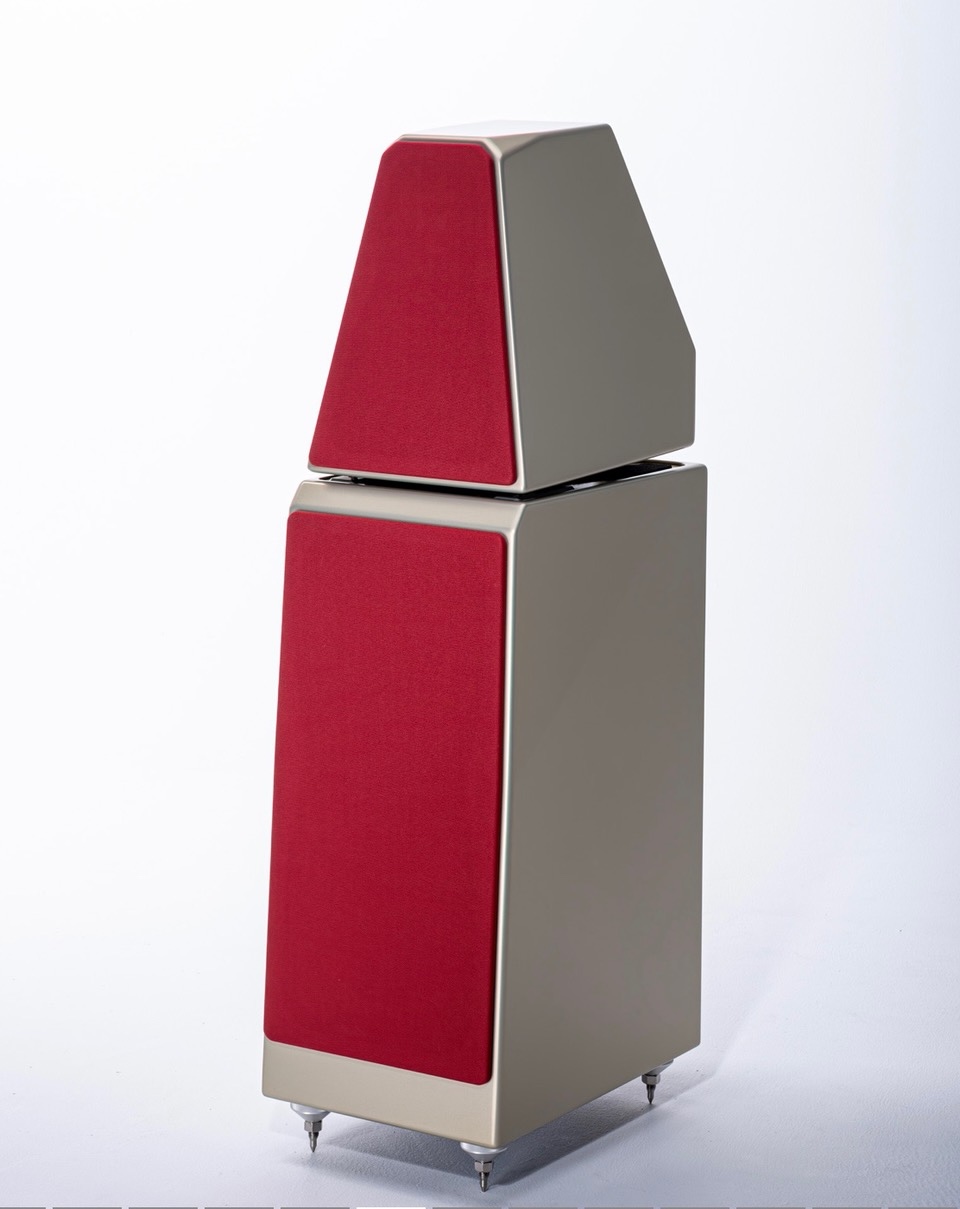
Specifications
Enclosure Type Woofer: Rear ported
Enclosure Type Midrange: Rear vented
Enclosure Type Tweeter: Sealed
Woofers: Two—8 inches (20.32 cm) Paper Pulp
Midrange: One —7 inches (17.78 cm) Paper Pulp Composite
Tweeter: One —1 inch (2.54 cm) Doped Silk Fabric
Sensitivity: 89 dB @ 1 Watt @ 1 meter @ 1 kHz
Nominal Impedance: 4 ohms / minimum 2.87 ohms @ 86 Hz
Minimum Amplifier Power: 25 watts per channel
Frequency Response: 26 Hz – 30 kHz +/- 3 dB Room Average Response [RAR]
Overall Dimensions: Height—43 11/32 inches (105 cm) w/o spikes)
Width—12 inches (30.48 cm)
Depth—18 11/16 inches (47.44 cm)
System Weight Per Channel: 160 lb (72.57 kg)
Manufacturer Information
Wilson Audio
2233 Mountain Vista Lane
Provo, Utah, USA 84606
Phone: (801) 377-2233




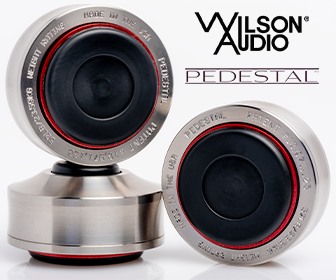
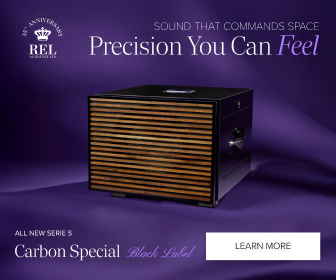
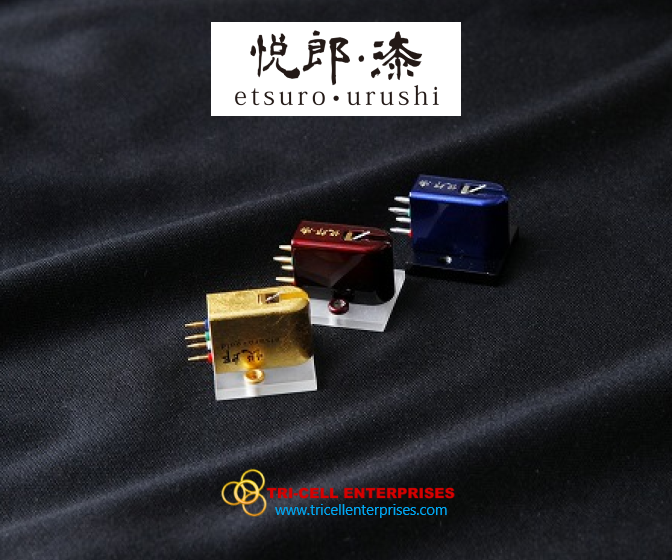

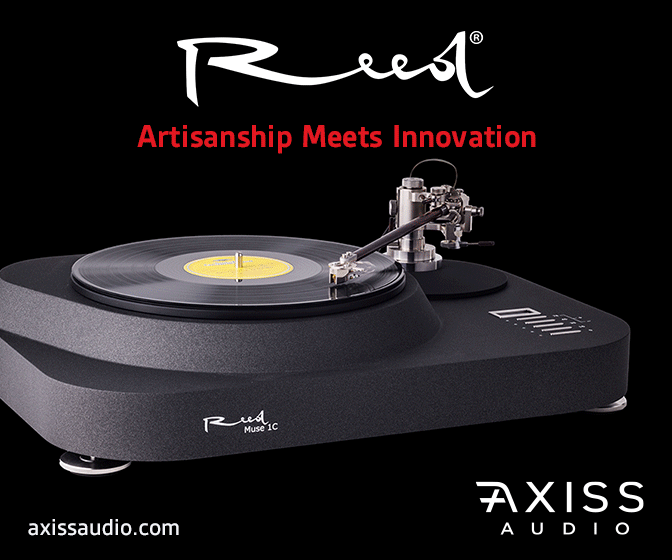
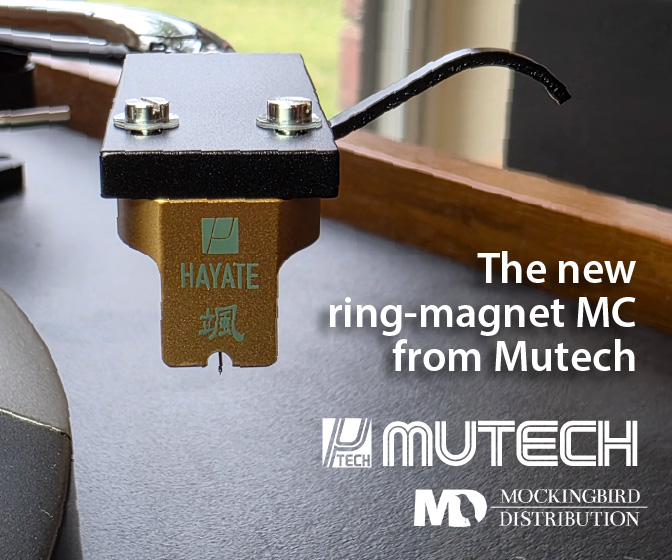
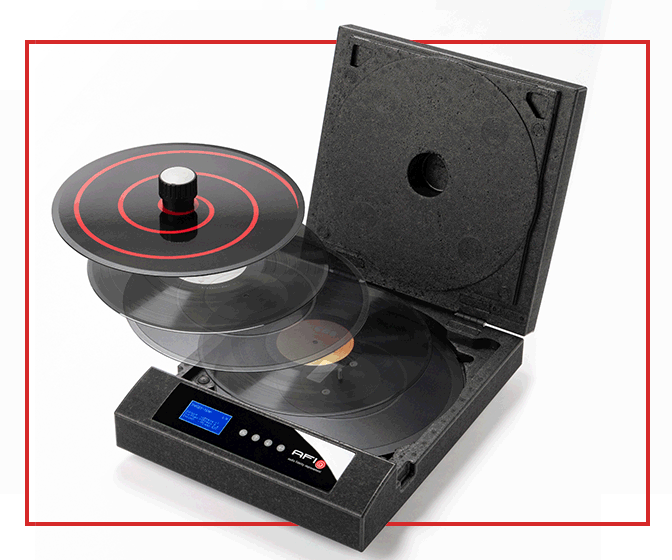
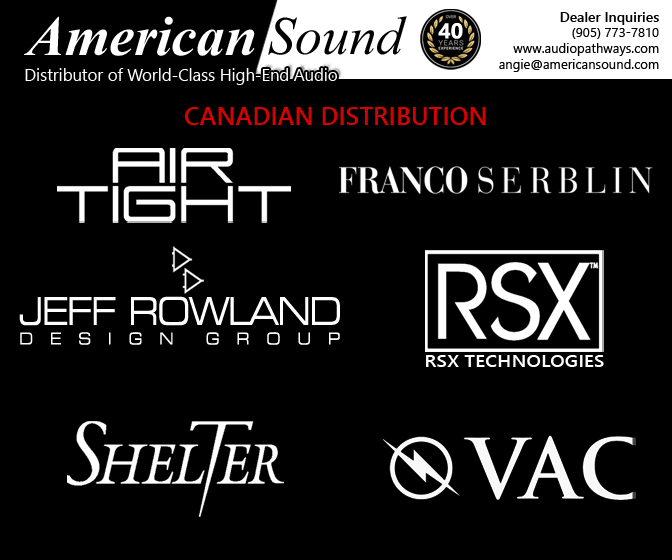
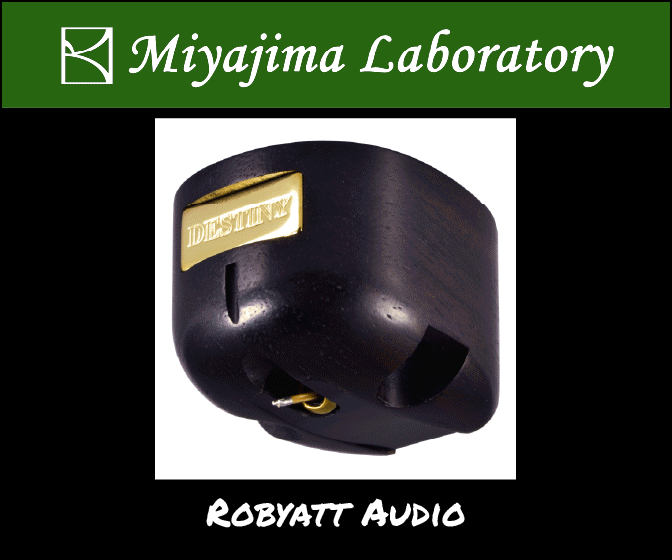





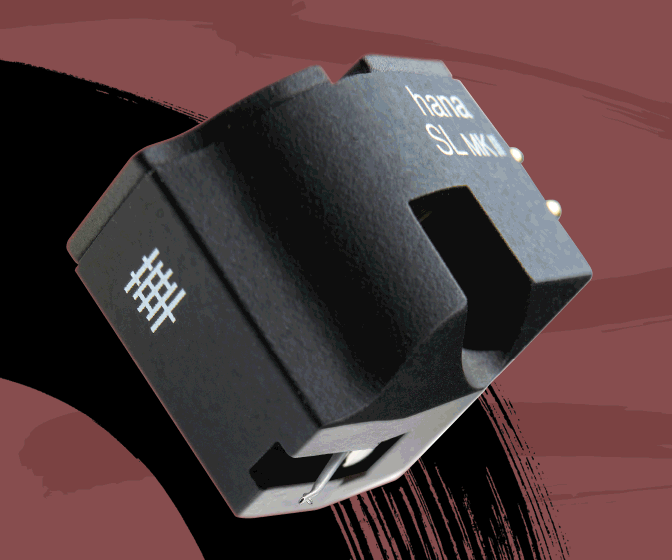
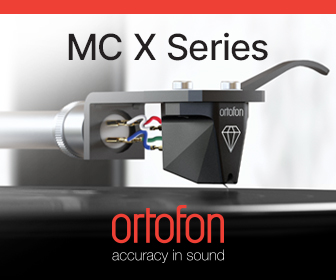
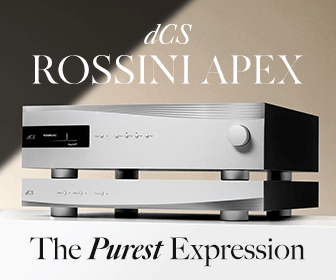
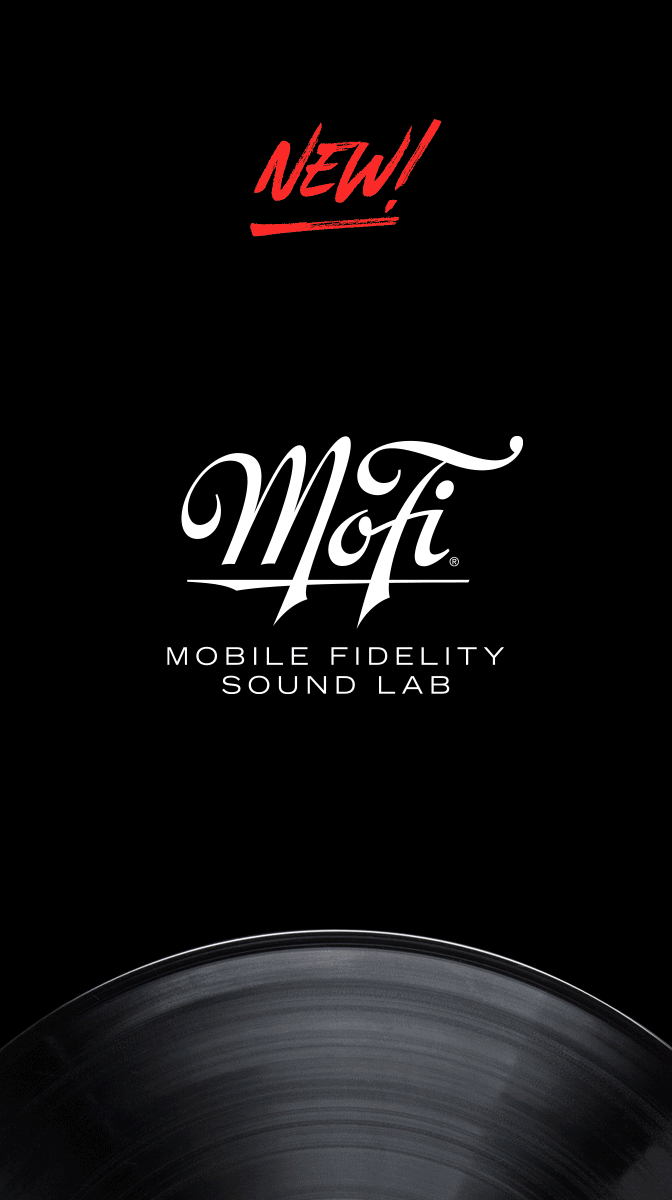
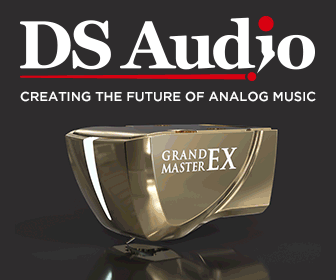
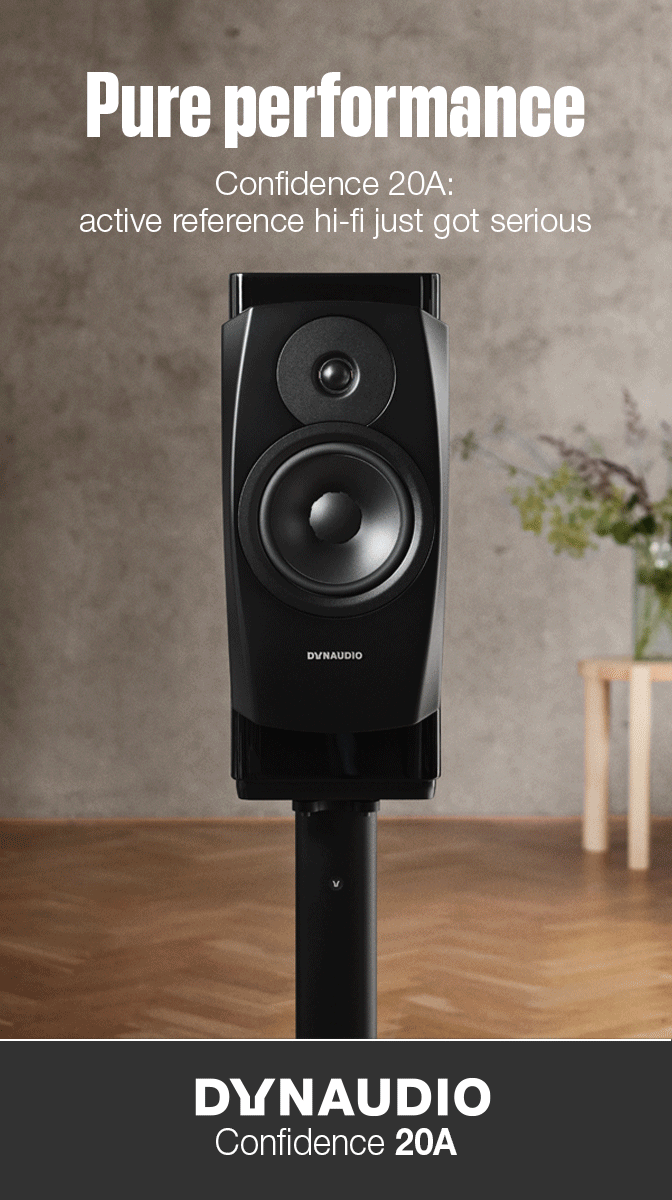
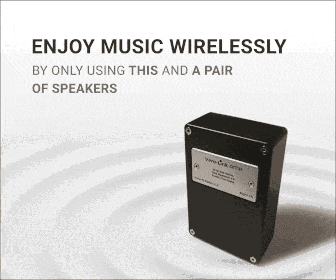
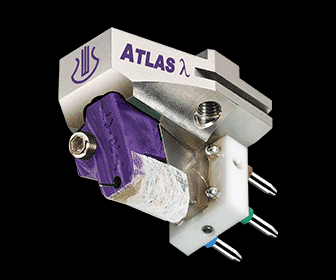

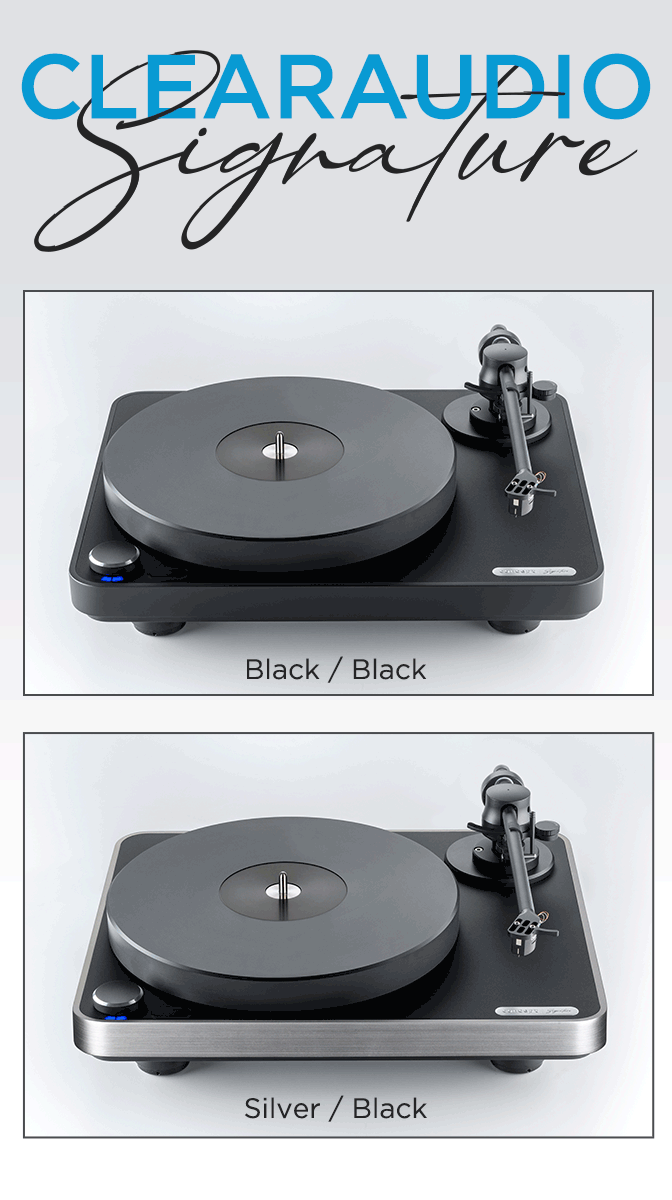


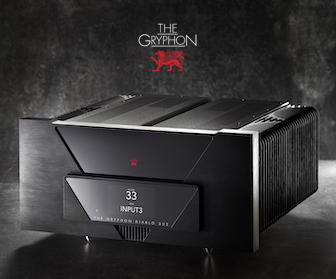
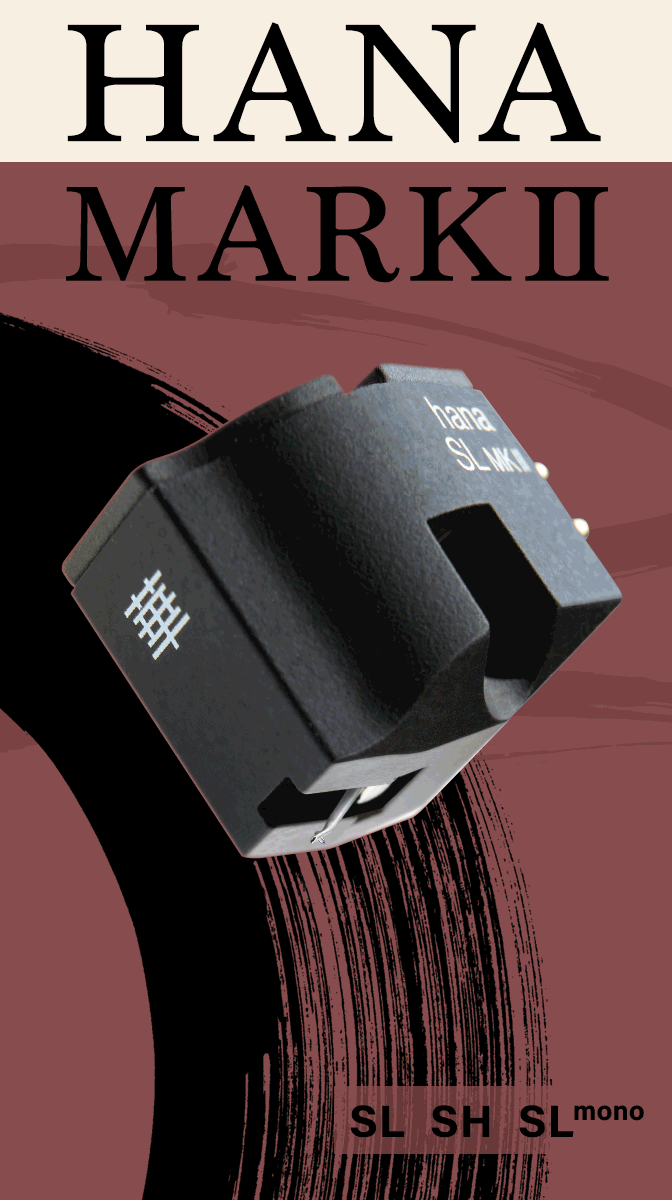


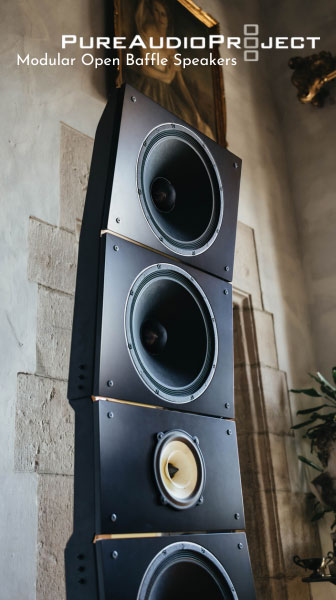






.png)








